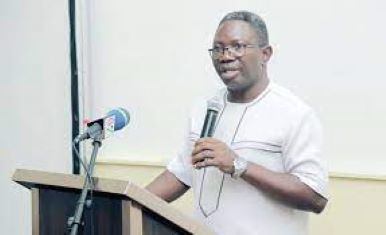
Invest in Technology for Electricity Company of Ghana (ECG) Turnaround & Sustainabilit
The Electricity Company of Ghana (ECG) faces significant technical and operational challenges, with system losses hovering around 20%.
The majority of these losses are technical, stemming from aged infrastructure and inadequate monitoring systems.
This paper proposes targeted investments in modern technology to address these challenges. The focus is on the replacement and renewal of ECG’s over-30-year-old backbone infrastructure and the integration of advanced technologies such as specialized drones equipped with GPS capabilities.
International case studies are highlighted to underscore how similar strategies have successfully transformed other power distribution companies. Finally, the paper emphasizes the need for ECG to operate as a business-oriented, politically independent entity.
Efficient power distribution is crucial for economic development.
ECG’s persistent operational inefficiencies, reflected in high system losses, threaten Ghana’s energy security and economic growth. Technical losses, primarily due to voltage leakage from aging infrastructure, and operational inefficiencies such as power theft exacerbate the problem.
Addressing these challenges requires a two-fold approach: upgrading infrastructure and adopting advanced monitoring technology.
The Case for Investment in Technology
1. Upgrading ECG’s Backbone Infrastructure
Over 30% of ECG’s infrastructure is more than three decades old. Voltage leakage through aging transformers, substation equipment, and power lines results in substantial technical losses. A phased infrastructure renewal program, focused on replacing outdated equipment with energy-efficient alternatives, could significantly reduce these losses.
Key Benefits:
? Reduced Voltage Leakage: Modern transformers and insulated power lines minimize energy dissipation.
? Enhanced Capacity: New infrastructure can support increased demand, reducing the risk of overloading and unplanned outages.
? Lower Maintenance Costs: Replacing aging assets with new technology reduces frequent repair costs.
International Reference:
The Philippine Meralco Company (Meralco) undertook a similar transformation by investing in smart substations and modernizing its distribution network, reducing its technical losses from 9.8% to below 5% over a decade.
2. Leveraging Specialized Drone Technology for Monitoring
Power theft and system inefficiencies are often challenging to detect in real-time. Specialized drones equipped with GPS and thermal imaging can monitor power flow, detect unusual voltage patterns, and pinpoint locations of power theft or infrastructure faults.
Key Benefits:
? Real-Time Monitoring: Enables faster identification and resolution of faults.
? Reduction in Power Theft: Drones can quickly detect illegal connections, particularly in industrial areas with high consumption.
? Cost-Effectiveness: Reduces the need for manual inspections, saving time and resources. International Reference:
India’s Tata Power implemented drone-based monitoring systems in its distribution network. This initiative reduced power theft and brought technical losses down from 12% to 4% in high-loss areas within three years.
Transforming ECG into a Business-Oriented Entity
Political interference has historically undermined ECG’s operational efficiency. To ensure its sustainability, ECG must be restructured to function as a profit-oriented entity with minimal political oversight.
Key Recommendations:
1.Decentralization: Empower regional branches with operational and financial autonomy.
2.Corporate Governance: Appoint a professional board of directors with clear Key Performance Indicators (KPIs).
3.Performance-Based Contracts: Link staff remuneration and promotions to performance metrics.
4.Independent Regulation: Strengthen regulatory oversight to ensure transparency and accountability.
International Reference:
Kenya Power and Lighting Company (KPLC) underwent significant restructuring in the early 2000s,
resulting in operational independence and improved service delivery.
Financial Implications
While the proposed investments may appear capital-intensive, the long-term savings and revenue gains far outweigh the initial costs. Reducing technical losses from 20% to 5% could save ECG millions of Ghana cedis annually. Additionally, minimizing power theft and enhancing customer satisfaction through reliable service could significantly improve revenue collection.
Expert Judgement
ECG’s challenges are not insurmountable. By prioritizing investments in infrastructure renewal and adopting cutting-edge monitoring technologies, ECG can drastically reduce technical losses and improve operational efficiency. However, the success of these initiatives hinges on ECG’s ability to operate independently as a business-oriented entity. Drawing lessons from international successes, ECG has the potential to transform into a sustainable, efficient power distribution company, driving Ghana’s energy sector toward a brighter future.
References
Philippine Meralco Company. (2021). “Reducing Technical Losses Through Smart Substation Investments.” Energy Reports.Tata Power. (2020). “Drone Technology in Power Distribution: A Case Study.” International Journal of Energy Management.Kenya Power and Lighting Company. (2008). “Restructuring for Efficiency: Lessons from Kenya.” African Energy Review.World Bank Group. (2018). “Addressing Technical and Non-Technical Losses in Developing Economies.”
Dr. Elikplim Kwabla Apetorgbor (Power Systems Economist)
The post Invest in technology for Electricity Company of Ghana’s turnaround & sustainability – Apertorgbor first appeared on 3News.
Read Full Story











Facebook
Twitter
Pinterest
Instagram
Google+
YouTube
LinkedIn
RSS